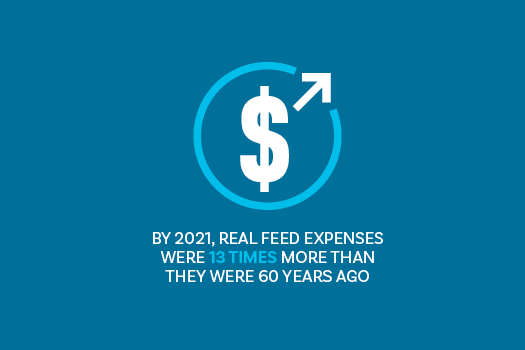New Zealand is blessed (most of the time) with warmish temperatures and regular rainfall which means we’re great at growing grass.
We don’t have the deep soils of the continents so our arable crops aren’t as reliable but grass we can do in acres, or hectares.
So that’s why our dairy cows eating their 18kg drymatter (DM) of grass a day is plain sense, along with topping that up with grain because physically most cows just can’t fit any more grass with its high water content into their rumens.
So in a way we’re not dairy farmers, we’re grass farmers. Making sure that 18kg DM of grass is there in the paddock every day for our cows keeps our costs down and the milk flowing into the vat.
But grass doesn’t grow the same amount every day, especially now in spring. And some paddocks will grow faster than others and the number of cows eating the grass is changing as they calve and you’re also trying to take paddocks out of the round to make silage and it can all get very confusing very quickly.
Some farmers solve the problem by weekly pasture walks, using a plate metre or one of the many new ways of measuring grass. They can print out spreadsheets, compare grass growth from year to year, report the figures to the farm owner or the farm consultant and do lots of maths. Research shows over and again that the top tier of profitable grass-based farmers are those who measure pasture and plan rotations. Lots of top operators plug the figures into DairyNZ’s spring rotation planner which will give you a good steer on which paddocks to graze first, and later, which ones to drop out for supplement. Find it on the DairyNZ website, along with advice on pre and post grazing residuals to aim for to keep the grass growing at optimal rates.
Yes it takes a lot of time but its important to know what is on hand and how fast the paddocks are growing. Find out from your local demo farm what general rates of growth are for the region.
A pasture walk with a plate metre can take you or one of your staff many hours in the day available between milkings. If that is too long, consider investing in technology to help – a tow behind or a grass measuring service – but don’t underestimate the usefulness of doing the pasture walk with your staff so that they get engaged and understand the process – then they can help out.
Once you have this sorted and have a few seasons under your belt you can start trusting your gut, and your cow’s gut.
You know your farm. You’ve fixed the fences, you’ve sprayed the weeds, you’ve found the water pipes after you cut them in two with the cultivator so you know your grass. You know how much clover there is compared to grass, the other good things like plantain, and you know all the things that shouldn’t be in there like thistles. Look at the density of it – are there bare patches, can you see space between the individual plants?
Is there old pugging damage and if there is, what is growing in the pug marks?
How do the south and north faces on the hills compare?
How early in the season does it start going to seed and which are the first paddocks?
Grass grows grass as the more there is of it, the quicker it will grow. It’s because the greater the leaf area the more light that is captured which is what the plant needs for photosynthesis.
So grazing it too low will mean it’s slower to recover. How low is too low depends on the species of grass and the age of the pasture (younger grass tends to recover faster) so again measuring it won’t help.
It also means in the few days before it is ready to be eaten again is when it’s growing the fastest. Miss it out of the round for whatever reason and you’ll be making silage in the paddock the following week.
In autumn, when pasture is growing slower, check for dead matter. Ryegrass continually has three new green growing leaves on each tiller with the older leaves dying if they haven’t been eaten first.
That dead matter can shade lower growing clovers and plantain so keep a watch out for it. But don’t worry too much because it’s also the stuff that feeds the worms.
More importantly, make sure you know your farm soils.
You should know which paddocks pug easily in wet weather, which have the stony belts through them that you should feed off first when a dry spell is coming, and which gateways go underwater so when heavy rain is coming you get the cows out now before the flood.
It’s this soil that grows your grass.
Get a spade and dig a few holes and look at the structure, how far the grass roots go down, how many earthworms are there smiling back at you.
Soil tests are great to show your soil’s pH and Olsen P levels but they should never surprise you.
A soil that is too acidic for good grass growth will look too acidic. Species such as dandelion that like acidic soils will be thriving in it. Buttercup and docks will be growing in your soils that are too wet and if you have browntop, start putting more fertiliser on.
If your cattle yards are growing the greenest grass on your farm, it’s a sure sign you need nitrogen or at least some clover to fix it.
If your weeds are taking over, think about why and see what you can do about it.
And also know your weather.
At this time of year, days are getting longer. In the south that is happening in minutes per day and every minute of sunshine is making your grass grow more.
Every drop of rain is helping it to grow too, unless the wind is taking it away even faster or there is so much of it the grass is getting trampled into the mud before it can be eaten.
Look at weather forecasts and understand how the weather affects your grass growth.
And look at the paddock after the cows have eaten it. What did they leave behind? Was it evenly grazed and if not, why not?
Did they camp in one area or were they evenly spread in the paddock? Where is the most dung? It will also be where the most nitrogen patches from their urine will be.
Remember all of that and when you have a look at the paddock a week later, how has it affected the grass growth?
But don’t forget your cows. When they come in for milking do they look full? Are they putting the milk into vat like they should be?
Are they all sitting down a couple of hours after milking chewing their cud happily or are half of them still looking for grass and the rest just given up?
Is the southerly blowing the rain so hard they are stacked into a corner and are not going to eat at all?
Work out how much they must be eating by doing the math backwards – and use this to reinforce what you are learning from measuring the grass.
Because it is important to consider all sides of the equation – how much grass is being grown and eaten and how much milk is being made.





